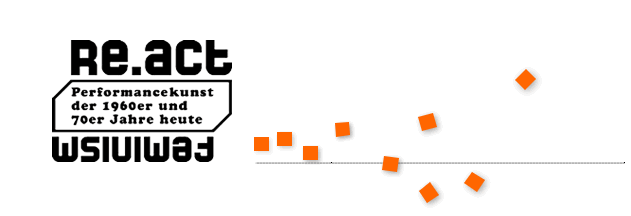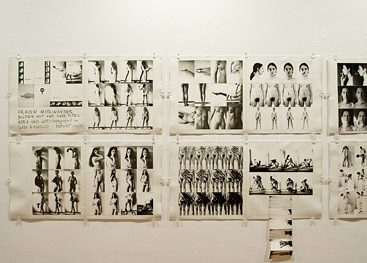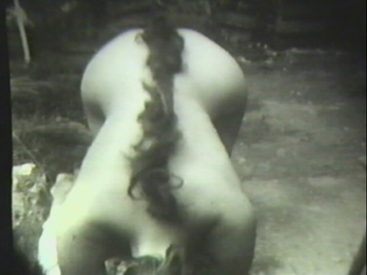




 |
|||||
 |
|||||
 |  |
||||
 |
|||||

Gabriele Stötzer: "und, frauen miteinander" (1982
/ 1983) in the exhibition .
Photograph: Andreas Süß
Gabriele Stötzer (GDR, Germany *1953)
Frustrated with the stagnated political climate and the powerlessness of intellectuals in the former German Democratic Republic of the late 1970s, an alternative cultural scene emerged that burst open the traditional canon of art with exhibitions in private homes, an independent music scene and super 8 movie showings.
In Erfurt, Gabriele Stötzer (Kachold) was one of the most rebellious and radical artists to create her own space for independence. After she spent a year in jail for signing a petition against the SED government’s withdrawal of songwriter Wolf Biermann’s citizenship in 1977, she became the director of the privately managed gallery, Galerie im Flur, until it was forced to close down in 1981. In 1980, she began creating multi-media, interdisciplinary art including painting, photography, film, clothing and fashion, books of photographs and, most importantly, writing. She is affiliated with the art scene in Prenzlauer Berg in Berlin and the super 8 film scene in Dresden. She has consistently and radically created her own pictorial language, rebelling against the official role of women in the GDR and subverting the fixed ideas of women in patriarchy in her art. Her confrontational attitude in her search for female utopian worlds (in the GDR) brought legal repercussions and vehement rejection by fellow artists. In 1984, she helped form one of the few groups of women artists in the GDR, Exterra XX, which was active in various incarnations between 1983 and 1989. The group developed films and fashion shows together in an attempt to acquire a niche in public space where life and art could merge in a sensual way.
"und, frauen miteinander", originally created as a picture book in 1982/83, was presented to the public for the first time in this exhibition. They display woman’s breaking into new aesthetic ground in an archaic pictorial language with great emotional depth, humor and self-confidence.
Gabriele Stötzer was part of the GDR's experimental super-8 scene of the 1980s. She mostly worked with other artists from her circle of friends, using archaic image structures to arrive at new models of femininity. A distinguishing characteristic of her camerawork was the visual proximity to her subjects, with Stötzer literally breathing down their necks, which created an almost tactile gaze. Stötzer often included her own naked body in her work, breaking taboos and hierarchies to create alternatives to the officially sanctioned and state-permitted gender roles.
The super-8 film "Frauenträume" was made in 1986 with Monika Andres, Gabriele Göbel, Monique Förster, Ingrid Plöttner, Elke Carl, Verena Kyselka and Sylvia Richter as actresses. Rocking chair idea: Ina Heyer. Camera & Editing: Gabriele Stötzer (Kachold).
In her super-8 film "Trisal", also from 1986, Gabriele Stötzer reworked the Greek legend which assigned the ram its place as the astrological sign of Aries. The animal had saved the lives of a prince and a princess and was slaughtered as payment for his deed. Its hide turned into the Golden Vleece and its body became a constellation of stars in the heavens. The willingness to make sacrifices, death and rebirth are the subjects of this narrative short film, for which the filmmaker expressly used only female protagonists. The actresses were again Monika Andres and Verena Kyselka.

Gabriele Stötzer: "Trisal" (1986).
image copyright Gabriele Stötzer, VG Bild-Kunst, Bonn
In the
Exhibition:
"Abwicklung", 1982.
"Auslöschung eines Blickes", 1983.
"Das Kleid,
"Der Schwanz,
"Das Loch,
"Das Ei,
"Körperlinien,
"Verschmelzung,
"Berg von hinten, Berg von vorn,
"Leporello,
"Der Rauch,
"Fingerspiele,
"Synthese,
"Die Scheibe.
Aus dem Fotobuch "und, frauen miteinander", 1982 / 83.
In the
Video Archive:
"Frauenträume", 1986, 27:00min
"Trisal", 1986, 21:00min